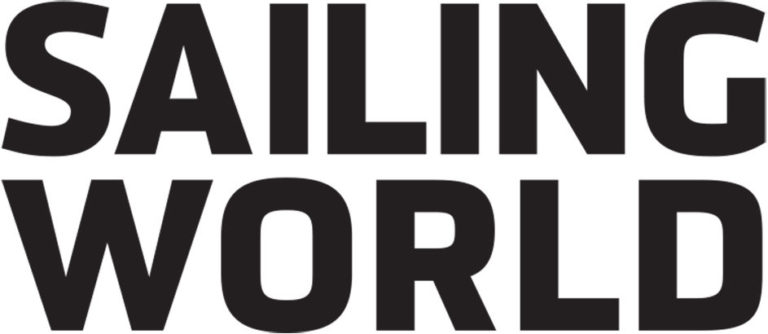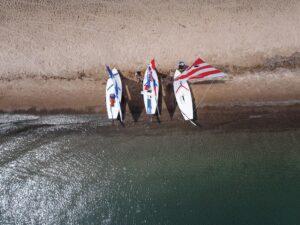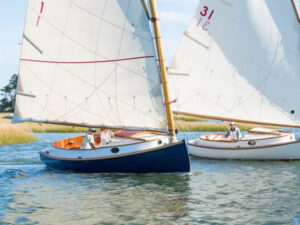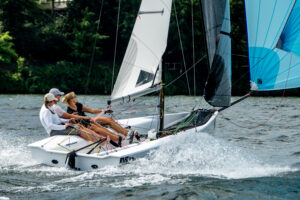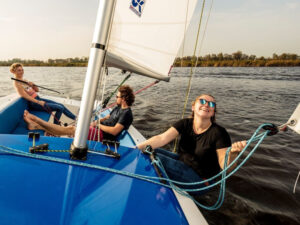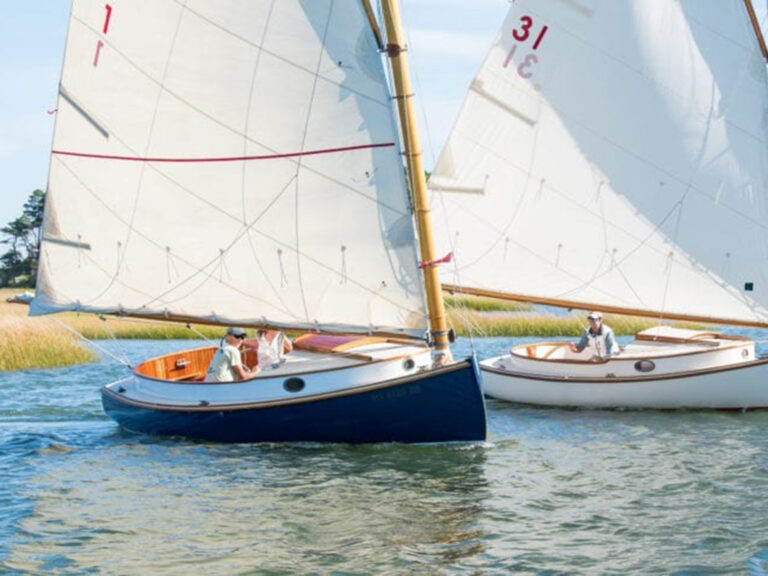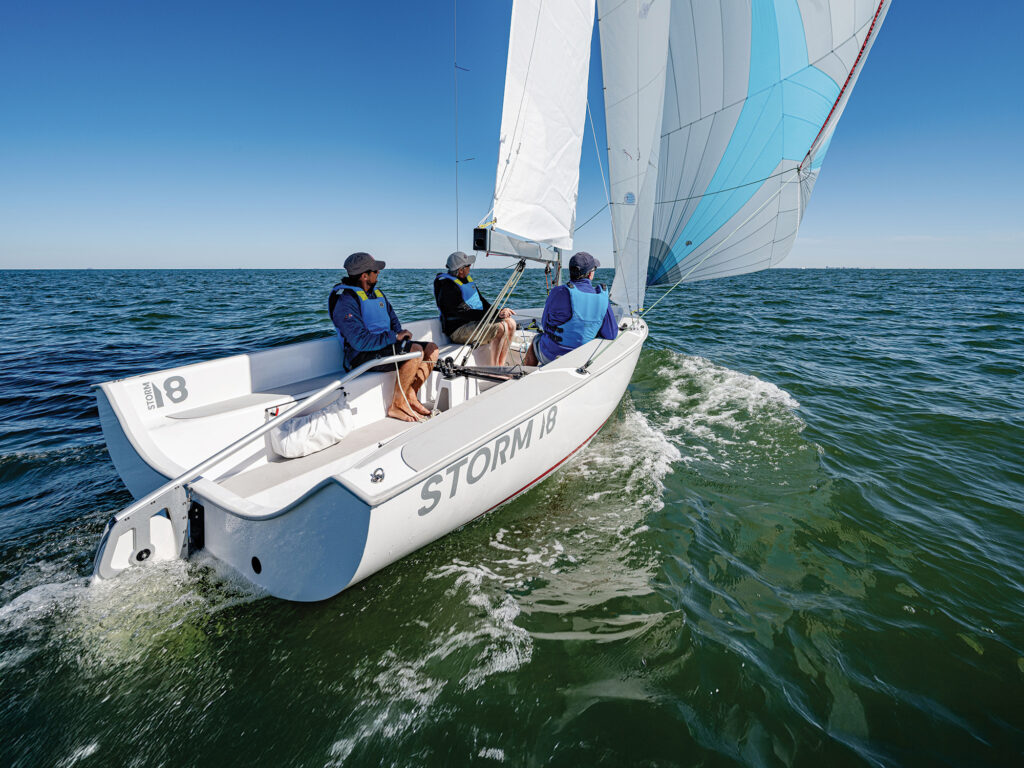
The Storm 18, which its creators categorized as a daysailer when entering this new US-built small craft into Sailing World’s 2026 Boat of the Year competition, is so much more. The design brief is for a versatile craft for clubs and hyperactive sailing centers that need a boat for teaching first, racing second, and for the adults and the youth squads expanding into team and match racing.
The backstory on the Storm 18 is a long one, but it takes root in the Northeast, where a number of Long Island Sound-based yacht clubs have been pushing their vintage Ideal 18s well past expiration dates. Storm Marine, a new company formed to bring this boat to market, identified a demand for a lower-cost US-built boat for clubs and community sailing programs. A collective of industry veterans conceptualized the boat, produced a prototype, and for the better part of a year, put it into the hands of opinionated sailors and program directors. What was presented to the judges in St. Petersburg in February was close to final, but there was more tweaking to come. By early spring, they said, they would be into production with the real deal.
The 1,300-pounder is expected to “deliver an exceptional sailing experience,” Storm Marine’s Bill Crane says, “a stable and safe platform that is versatile enough to be used by learn-to-sail participants, junior sailors, family racing, interclub racing (fleet racing, team racing, and match racing) and institutional staff.”
That’s a lot of boxes to check, but after a few hours of sailing, both BOTY judges, Mike Ingham and Erik Shampain agree that they’ve somehow managed to tick them all.
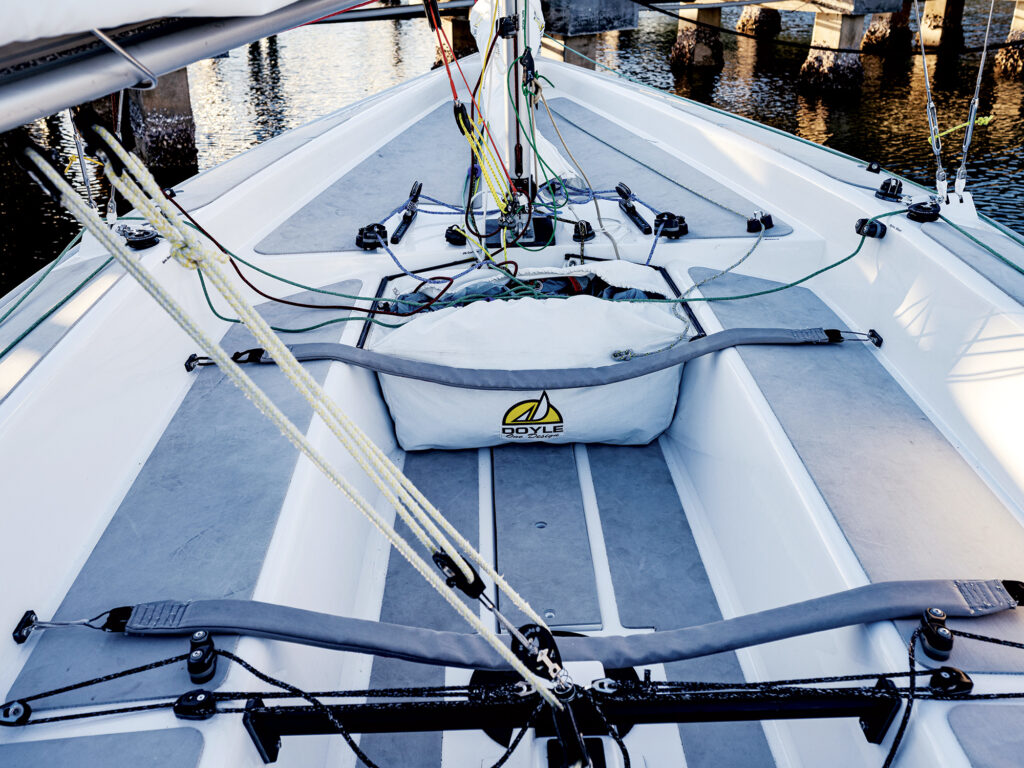
“They found their niche,” Ingham says. “It’s not flashy, but they got it right for what they want to do with it, which is a lot.”
As the boat skews heavily to institutional usage, it is essentially overbuilt, Crane says. “Whereas a lot of boats have stringers and bulkheads, this boat has two main pieces. With just two transverse frames, the vacuum-bagged hull and deck are flat-bonded along the rail, which is protected with a rub rail.”
One interesting approach used by the builder, Fulcrum Speedworks, is gluing all fittings to the laminate. No holes required: Every piece of hardware is mounted to glued G-Tech plates with stainless-steel threaded inserts. This approach has also allowed them to experiment with hardware locations and refine the boat’s ergonomics during its development, and there is a lot of hardware to handle the asymmetric- and symmetric-spinnaker setups. For the asymmetric, there’s a retractable pole in a foredeck trough, and the spinnaker pole is loosely stowed inside stainless-steel brackets on the boom.

The aluminum boom is a substantial rectangular section and quite a head-knocker (I can attest). According to Crane, the prototype’s boom had already been raised 40 mm from its original location, and will be raised another 120 mm. The boom will also be lengthened 100 mm to offset the change. Another change to the final version includes ditching the heavy and expensive aluminum rudder head. They will instead slot the tiller directly into the top of the rudder. What was, for our test, a kick-up rudder will be fixed.
Sailing it doublehanded in 10 knots and flat water, Ingham’s assessment is that “it’s a pleasure to drive. It’s very sensitive to body weight and sail trim.”
Shampain agrees, adding: “It does have a nice balance and a sportboat sort of feeling, but there’s some weight to it that gets it through the chop. It’s really responsive to crew weight and heel, but it did feel like a heavier boat at times when it got really light.”
Crane is OK with the boat being overbuilt. He likes the slogan: “It’s a fast slow boat.”
Inexperienced sailors should feel safe, he says, and experienced sailors will have fun with it. It is, indeed, stable at the dock and under sail, the judges note. They tried to force a capsize, but the fin keel and 245 kilograms of ballast weren’t having it.
Having been left with a positive lasting impression, both Ingham and Shampain return to shore pleased with the responsiveness of the spade rudder and the overall comfort of the boat. Four adults max would be about right, but it would be an easy singlehander too.

“It was a real pleasure to drive,” Shampain says. “And all the right systems and sail controls are there in the right place to teach everything—vang, outhaul, cunningham and traveler. I like that they didn’t oversimplify the boat; it’s just techie enough, but with all the seating and the soft deck [SeaDek panels], it would be a great little boat for harbor sailing.”
